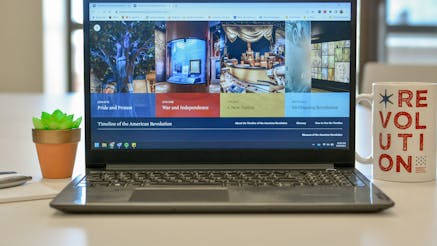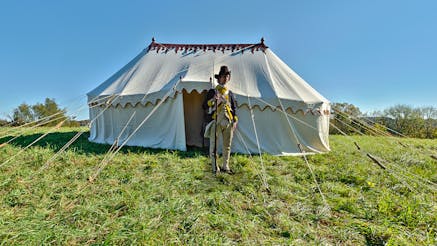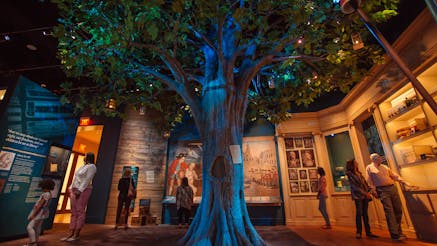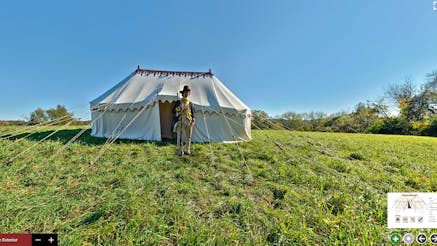Search Results

Timeline of the American Revolution

Museum's Virtual Tour of George Washington’s Field Headquarters Named a Webby Award Nominee

360-Degree Virtual Tours

New Virtual Tour Takes Viewers Inside a Recreation of George Washington’s Field Headquarters from the Revolutionary War
Cost of Revolution
The Davenport Letters
Meet the Figures: Oneida Nation Theater
Picturing Washington's Army
Among His Troops: Discovery
The Museum of the American Revolution’s newly discovered watercolor of the encampment at Verplanck’s Point is one of two known panoramic views of the Continental Army in camp, both of which army engineer Captain Pierre Charles L’Enfant created in 1782. When the Museum’s curators first saw the watercolor of Verplanck’s Point for sale at auction, they immediately saw similarities to L’Enfant’s panorama of West Point owned by the Library of Congress. An investigation of other original sources—diaries, letters, army orders, and maps—helped date both scenes to a narrow time period of three months, August through October 1782. Further study of the Verplanck’s Point watercolor’s provenance and a small ink inscription on the back confirmed that L’Enfant painted it during the Revolutionary War. The Museum’s discovery provides modern audiences with a glimpse into the highest professional moment of the Continental Army, the artistry of Pierre Charles L’Enfant, and a new eyewitness view of George Washington’s war tent.